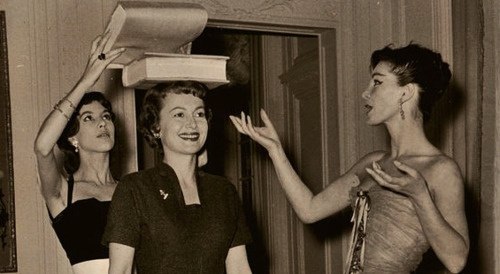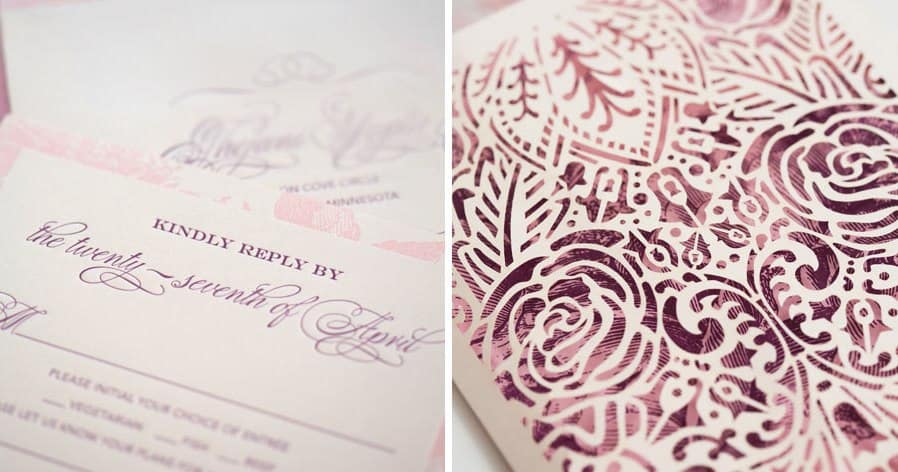Wedding Invitation Etiquette Mistakes You Didn't Know You Were Making
You may know the ins and outs of wedding etiquette, but when it comes to your own wedding it doesn’t hurt to brush up on the finer details.
To keep on top of things with ease, follow our checklist of oft-missed etiquette hiccups.
(Courtesy trainerdiva.com)
Etiquette Mistake 1: Save-the-Date and Invitation Blunders
These two cards are the first impression that your guests-to-be experience of your wedding. The style, tone and look of these, along with the information they carry, set the tone for what follows. Make sure you start off on the right foot by double checking the following:
• Make sure you’ve included the location of your wedding on your save-the-date card, which you should be sending out around five to six months before the wedding. It’s not necessary to include specific details (like the venue) just yet, but leaving out location altogether gives your guests little time to plan any arrangements they might need to make. This is especially true in the case of a destination wedding, but even if you and your future hubby grew up and live in the same home town, it’s still worth specifying so as to allow for any distant friends and family to make travel arrangements. Speaking of travel – when you put together your final invitations, consider including a map to your chosen venue. This will save your guests’ time and make things easier for everyone involved, especially if you include landmarks or other significant features on the map.
• Send your official invitations out around six weeks before the wedding so that you have the complete, final numbers far ahead enough to be able to plan details like putting in final orders for catering and tackling the tricky task of planning who sits where.
• When it comes to formal invitations, politely make it clear exactly who is invited and if they may bring a guest or not. Deciding on where to limit this can be tricky, but do make sure that the same set of rules are applied fairly and to everyone. For example, if you can’t afford to give every guest free reign to bring whoever they want (and let’s be honest – who can?), you may decide to invite only guests in an official relationship to bring their significant other along. Specify this by writing the names of both on the invitation. Alternatively, if you decide to allow everyone over the age of 18 to bring a partner, simply address the invitation itself to that person “plus one” or “and guest” and ask that they include final partner information in the RSVP for place setting purposes. The containing envelope should only use the recipient’s name, in this case, as they are the ones who will be inviting their partner – one of the few processes that you, as the bride, are pretty much not involved in.
• Don’t forget to include postage stamps on your RSVP slips. This makes the whole process simpler and much smoother for everyone. That way, guests are saved a trip to buy stamps, and you’re more likely to receive responses in good time since it’ll take minimal effort.
• If, prior to sending out invitations, someone has already told you that they will be unable to attend the wedding, do not send them an invitation in the mail regardless. This could be seen as pushy or even money-grubbing. Instead, if this person is a close friend or family member, you could send the invitation along with a note saying you regret that they are unable to attend but you thought you’d send them an invitation for memento purposes.
• Don’t include your registry details on the invitation itself – it may leave your guests feeling resentful of what could be perceived as presumption and entitlement. After all, the wedding invitation is about you inviting them to share an extremely special day with you, not about your chance to make doubly sure every person gives you a gift. Rather, spread your registry details by word of mouth. This comes off as far more polite and can be done casually.
• Be certain of the time you print on the invitation. Intentionally declaring the start time as earlier than it is actually planned for runs the risk of leaving well-meaning guests to wait around for you, which might spark some irritation. Rather, state the actual time that proceedings will actually begin on the invitation- if you’re planning on sending your flower girls down the aisle at 5pm, use that as the official starting time on your invitation. Guests have common sense enough to arrive early to such a formal occasion in order to take their seats.
• Lastly, try to avoid printing guests’ addresses onto the envelopes – it’s impersonal and you run the risk of your invitation simply blending in with regular mail. Rather, handwrite the addresses yourself or perhaps ask a family member with calligraphy skills or nice handwriting to do it as a favour for you. MIT, Harvard and Yale psychologists found that heavier, more tactile paper is regarded with more importance when compared to normal printing paper. So to make your invitations truly stand out from you regular post, consider printing them on a thick parchment paper.
Etiquette Mistake 2: less-than-ideal ceremony and reception arrangements
Nobody could blame you for tailoring your ceremony to your own needs – it is your wedding day, after all – but sometimes taking the needs of guests into account can be the difference between a successful day and something of a let-down.
• When cutting costs, it has become fairly common practice to book weddings for cheaper, off-peak times like Friday or Sunday. But before you take that leap and put the deposit down, think about your guests. After all, there’s a reason these days are cheaper – they’re less convenient. A Friday will have guests either missing the ceremony or having to take off work (which they might not be able to do), while a Sunday will see people heading home early from the reception to catch a good night’s rest before work the next day. Saturday is the perfect middle ground where most people have free time available. If you must book on alternative days, try, for a Friday wedding, to have the ceremony starting from early evening onwards with the reception going on into the night, or, for a Sunday wedding, hold the entire wedding day from mid-morning to mid-evening.
• Another popular budget trimmer is the idea of having a cash bar. It’s unlikely that anyone would mention anything to you directly, but it can come off as a bit cheeky to ask guests to open up their wallets at your wedding reception. If you can’t afford to sponsor a full bar-service consider providing wine and beer only, both of which are relatively inexpensive in comparison to costly spirits and mixers. Also consider hosting your reception in a venue which allows you to bring your own alcohol in. Cutting out the middle man in this scenario will help you avoid overpriced venue drinks. In addition, any unopened drinks left over after the ceremony could be eligible for a refund (best to check with your supplier for specifics).
• Don’t forget that any service providers who are present for the full reception and beyond will need something to eat – here, think of the band, photographers, and so on. In fact, most service providers will specify this in their contract but even if they don’t, it would be impolite not to consider these needs. Instead of shelling out on the full three-course meal for each of them, consider asking your caterers to provide specific meals for them – you can usually get just the main course for them at a reduced price. Alternatively, provide some other quick meal for them such as pizza or sandwiches.
• Perhaps the most damning wedding reception faux pas is missing out on greeting each and every guest personally. Yes, receiving lines may seem a bit old fashioned, but they work, so they really are worth seriously considering. Still, if the idea of a receiving line completely and irrevocably grates you, be sure to pay a visit as a couple to each table during the reception, taking the utmost care not to miss anyone (or any table) out.
Etiquette Mistake 3: Slip-Ups with Gifts and Thank-Yous
As much as we all love presents and do deserve to spoiled on our big day, it’s important to keep things in check throughout the whole process.
• When it comes to gifts, do your best to manage your expectations – the idea that every guest must give a gift is, unfortunately, a myth, and is a personal decision for them to make at their own discretion, along with the value of the gift itself.
• Don’t forget to do some gift giving of your own. Your bridesmaids, for example, will have spent a bundle between the dress, your bridal shower, your bachelorette, and the wedding day itself. Investing in a well thought-out and high-quality gift is important in showing your appreciation to the ladies who have had your back in every way possible throughout the entire wedding process.
• Sending handwritten thank-you cards is a must. Guests often spend a fair deal of money in getting to the wedding location and other things such as accommodation. Taking the time to handwrite the cards is a genuine way of showing your appreciation and is worth ten times as much as a general, pre-printed message. Put this task on high priority status as soon as you return from your honeymoon – you should be sending out thank-you cards no later than three months, tops.
• When composing your thank-you cards, be sure to personalise the content, too. The last thing you want is family members comparing cards and realising that they’re word-for-word duplicates. While nobody expects you to write a full-length letter for each individual, it’s important to write a sentence or two thanking them for that particular gift and briefly describing how you plan to use it.
By keeping these guidelines in mind you’re ensuring that your wedding is an enjoyable, drama-free day for everyone. While these steps do take a bit of extra effort, they go a long way towards creating wedding day memories to be treasured by all for years to come.







